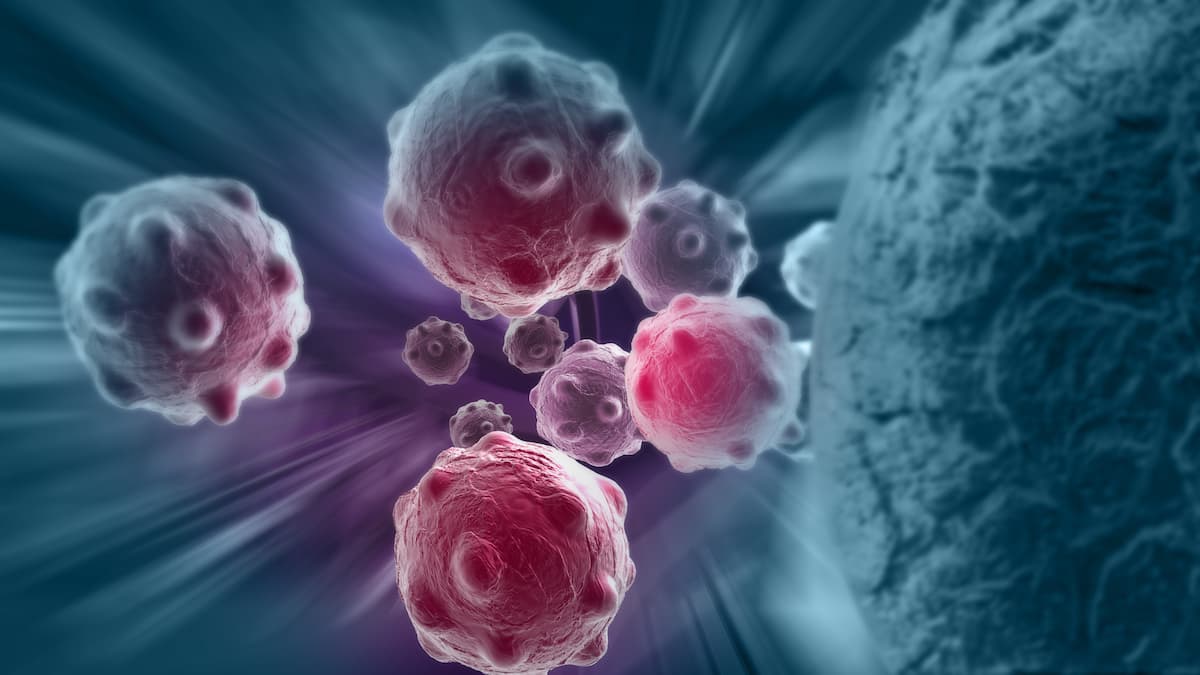UCBT Yields Excellent Efficacy Outcomes in Hematologic Malignancies
The analysis saw minimal evidence of increased relapse among patients with hematologic cancers and minimal residual disease vs those without.
The analysis saw minimal evidence of increased relapse among patients with hematologic cancers and minimal residual disease vs those without.

Unrelated umbilical cord blood transplantation (UCBT) elicited favorable efficacy outcomes in patients with hematologic malignancies following microcystic adnexal carcinoma (MAC), according to an oral presentation on phase 2 study results (NCT00719888) given at the 2025 Tandem Meeting.1
Among patients who were treated on the study (n = 132), the 2-year overall survival (OS) rate was 74% (95% CI, 65%-80%) in this population, with a reported 2-year progression-free survival (PFS) rate of 70% (95% CI, 61%-77%). Furthermore, the 2-year relapse rate was 16% (95% CI, 10%-23%), and the non-relapse mortality (NRM) rate was 14% (95% CI, 9%-21%).
In pediatric patients who received UCBT (n = 71), greater benefits to 2-year OS and PFS were observed. The 2-year OS rate was 81% (95% CI, 69%-89%), and the 2-year PFS rate was 78% (65%-86%). Additionally, the 2-year relapse and NRM rates were 13% (95% CI, 6%-22%) and 9% (95% CI, 4%-18%), respectively.
Particular benefit was also observed in patients with acute leukemia and minimal residual disease (MRD)–positive status (n = 33) vs those with MRD-negative disease (n = 81). The 2-year OS and PFS estimates for patients with MRD-positive acute leukemia were 67% (95% CI, 46%-81%) and 63% (95% CI, 42%-78%), with 2-year relapse and NRM rates of 11% (95% CI, 3%-26%) and 26% (95% CI, 11%-43%).
The odds ratio (OR) for OS in the MRD-positive population vs the MRD-negative group was 2.10 (95% CI, 1.02-4.35; P = .04). ORs for PFS, relapse rate, and NRM rates were 1.79 (95% CI, 0.89-3.59; P = .10), 0.92 (95% CI, 0.31-2.78; P = .89), and 3.38 (95% CI, 1.27-9.03; P = .01), respectively.
“Data from this prospective trial demonstrated excellent outcomes for cord blood transplant recipients receiving myeloablative conditioning in both the high- and middle-intensity arms,” John Colgan, MD, a pediatric bone marrow transplant and immunotherapy fellow at Fred Hutchinson Cancer Center, said in the presentation.1 “Critically, this study confirms, prospectively, that in contrast to other stem-cell sources, [UCBT] demonstrates low rates of relapse in [patients with] acute leukemia with MRD coming into transplant, consistent with evolving literature in the field. Overall, this study highlights the role of cord blood as a uniquely beneficial donor source in transplant for [patients with hematologic malignancies].”
The single-arm phase 2 study enrolled a total of 132 adult and pediatric patients with hematologic malignancies undergoing UCBT following MAC. Patients were assigned to either a high-intensity or intermediate-intensity regimen.
Patients undergoing the high-intensity regimen received 25 mg/m2 of intravenous fludarabine over 30 minutes at 8 to 6 days before UCBT treatment and 60 mg/kg of intravenous cyclophosphamide over 30 minutes on days 6 and 7 before UCBT. Additionally, total body irradiation (TBI) at 165 cGy was administered twice daily at 4 to 1 days before UCBT.
Patients in the intermediate-intensity regimen arm received 30 mg/m2 of intravenous fludarabine over 30 to 60 minutes on days 6 through 3 before UCBT treatment and over 30 minutes at 2 days before treatment. Additionally, 50 mg/kg of intravenous cyclophosphamide over 30 minutes was given on day 6 before treatment and 5 mg/kg of intravenous thiotepa over 2 to 4 hours at 4 to 5 days before initiation of UCBT. TBI was dosed at 200 cGY once daily at 2 to 1 days before UCBT.
Patients on trial had a median age of 20 years (range, 0-63) and had a median follow-up of 3.5 years (range, 0.2-16.2); 43% were female. A total of 43% of patients had acute myeloid leukemia (AML), 36% had acute lymphocytic leukemia (ALL), and 7% had myelodysplastic syndromes (MDS). A total of 29% of patients had MRD–positive acute leukemia, and 31% had CR2-positive status. Of note, 79% and 21% of patients were assigned to the high-intensity and intermediate-intensity regimens, respectively.
The primary study end point was 1-year survival. Secondary end points included transplant-related mortality (TRM) at 6 months, disease-free survival (DFS) at 1 and 2 years, relapse at 1 and 2 years, neutrophil engraftment at day 42, and platelet engraftment at 6 months.2
References
- Colgan J, Gooley TA, Hadland B, et al. Results from a prospective phase II clinical study: high vs medium-intensity regimens in patients undergoing cord blood transplantation. Presented at: 2025 Transplantation and Cellular Therapy Meetings; February 12-15, 2025; Honolulu, HI. Abstract 12
- Umbilical cord blood transplant, cyclophosphamide, fludarabine, and total-body irradiation in treating patients with hematologic disease. ClinicalTrials.gov. Updated January 5, 2025. Accessed February 13, 2025. https://tinyurl.com/7drpa7p7
Newsletter
Stay up to date on recent advances in the multidisciplinary approach to cancer.